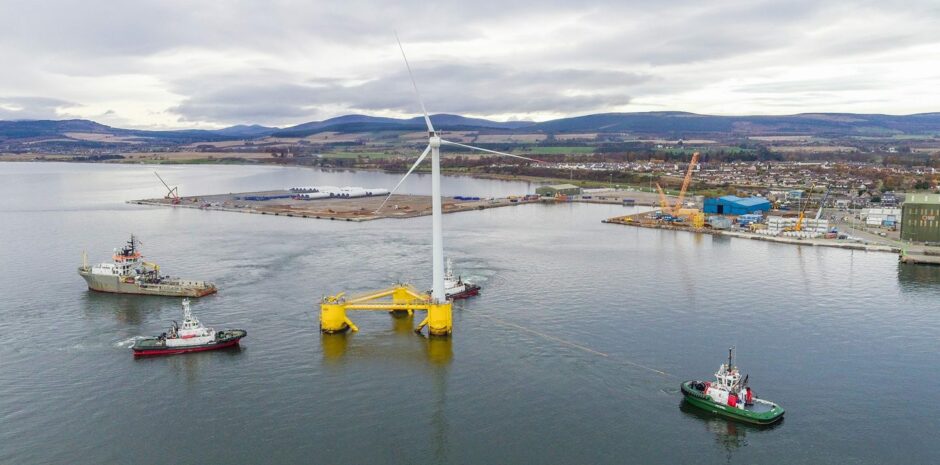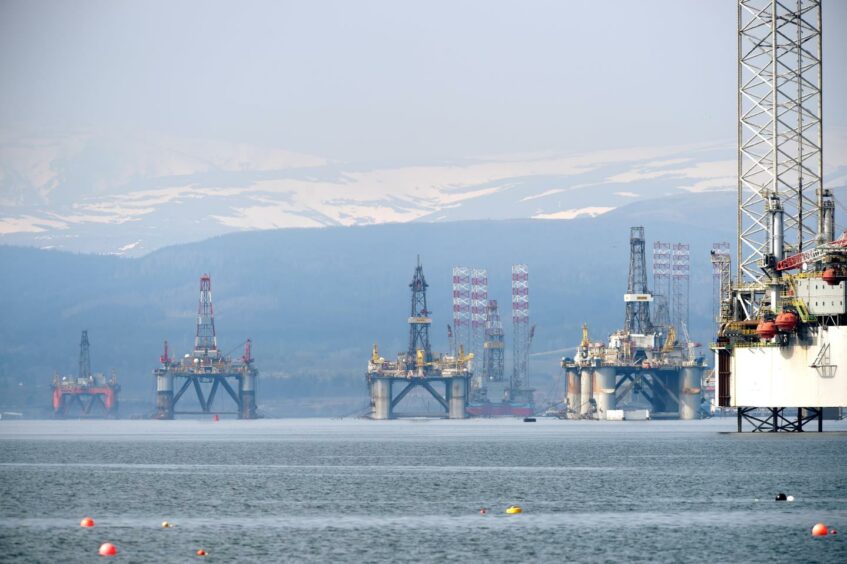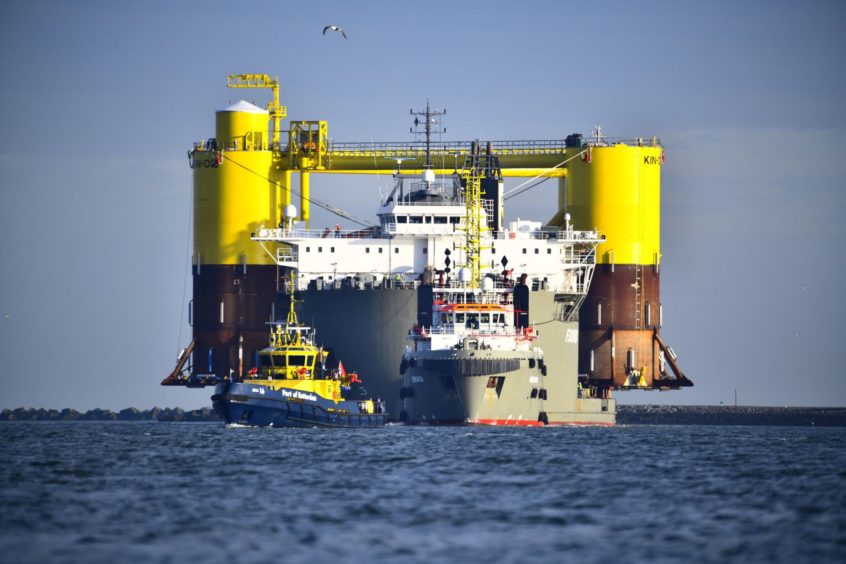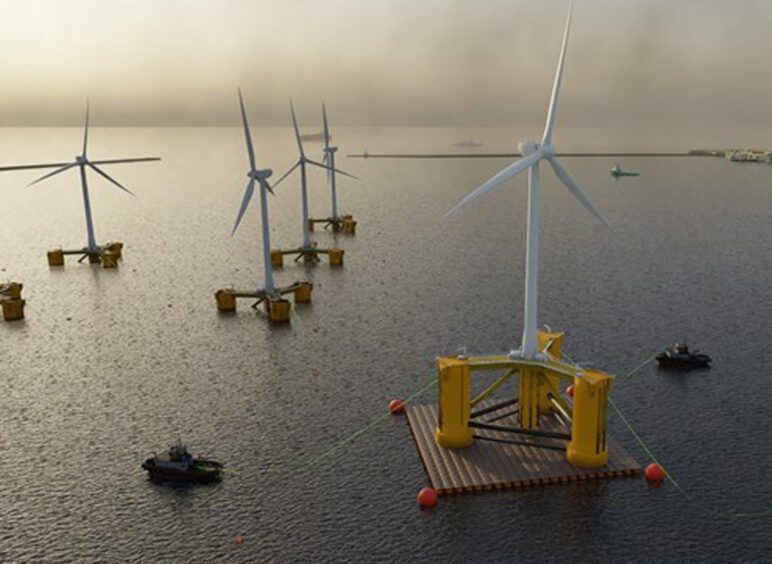
For decades oil rigs have been part of the furniture in and around the Cromarty Firth in the north of Scotland.
Its geography offers natural protection from the harsh conditions of the North Sea, making it an ideal location for rigs to park up between jobs.
But the upcoming offshore wind boom means the idyllic region may soon be dominated by a different type of structure.
Joanne Allday, Port of Cromarty Firth strategic business development manager, says they are in discussions with offshore wind developers who want to store north of 50 floating turbine units in the inlet.
A floating boom
Floating wind developments made up around half of the ScotWind winners announced at the start of the year.
And in the next decade or so it is estimated around 1,300 floating turbines will be installed in Scottish waters.
For floating wind, large offshore storage sites are needed to house the huge structures while they wait for turbines to be fitted or to be towed out to sea.
Speaking at the Floating Offshore Wind 2022 conference in Aberdeen, Ms Allday said: “We’ve looked after oil and gas infrastructure for the last 40 years. Those of you that know the Cromarty Firth will have seen oil rigs coming in and out – we do a lot of the repair and maintenance work.
“During Covid-19 we had the most rigs we’ve ever had; we went up to 18 I think. Each of these rigs is about the same size as a floating offshore wind substructure. Developers would like us to be able to accommodate between 50 and 100 of those.
“While we’ve got a huge amount of experience in mooring and anchoring rigs safely, it is a very different proposition when you’re looking at an industrialised process.”
A steady pipeline of work
The prominence of oil rigs in the Cromarty Firth landscape has attracted criticism in the past from local residents.
When the number of units in the region hit a high during Covid, one councillor described the area as an “oil rig graveyard”, while complaints also spiked.
Whether the presence of floating structures draws the same ire remains to be seen, but Ms Allday says there’s a good reason for the Cromarty Firth, a green freeport hopeful, to become a wet storage site.
By stacking units in water, quaysides can be kept clear, allowing work to continue and avoiding supply chain stoppages.
Ms Allday said: “It is really worthwhile doing it because it provides year-round jobs. If you can keep your manufacturing going, you’re less reliant on a mobile workforce and people will come, invest and settle in the area.”
Recommended for you


 © AJL/ Sandy McCook
© AJL/ Sandy McCook © Boskalis/ Danny Cornelissen
© Boskalis/ Danny Cornelissen © Supplied by EMEC
© Supplied by EMEC